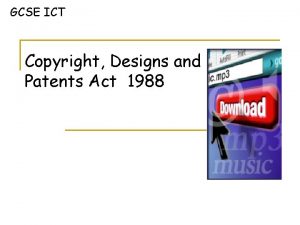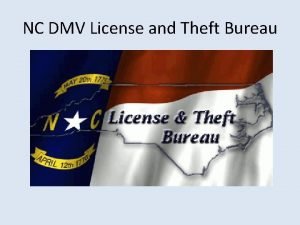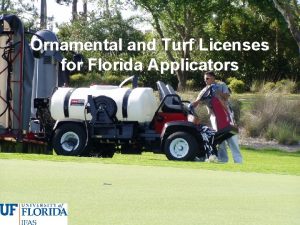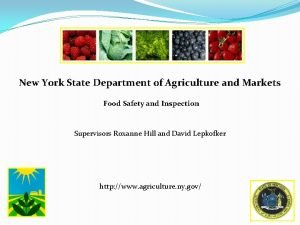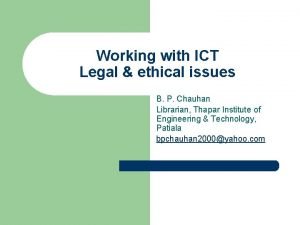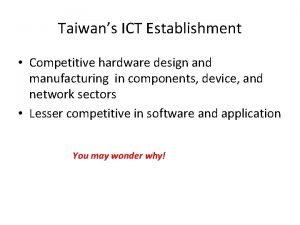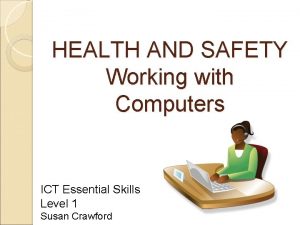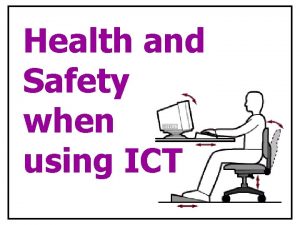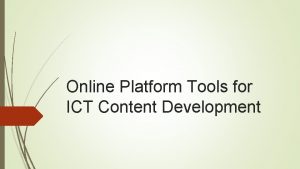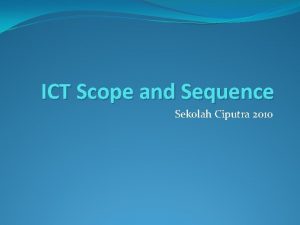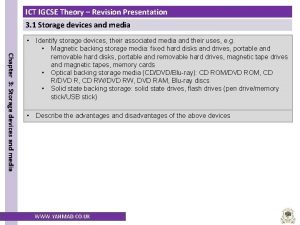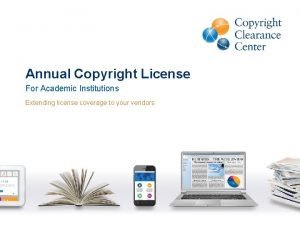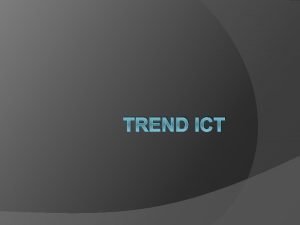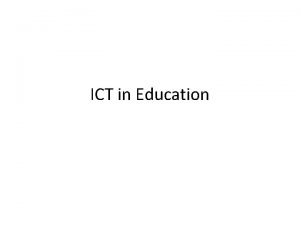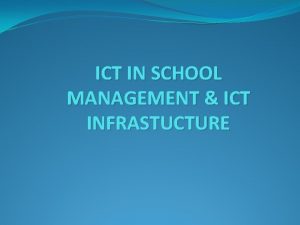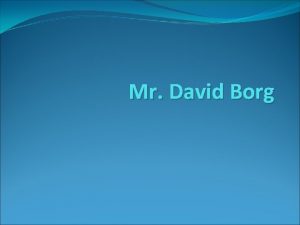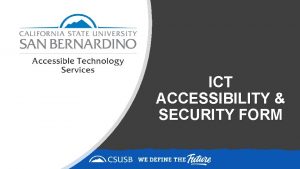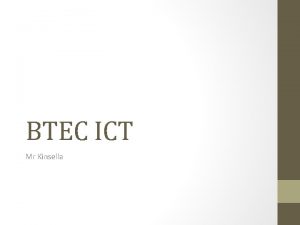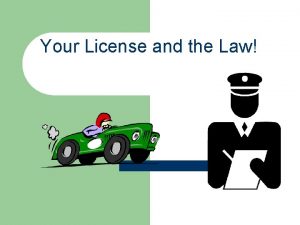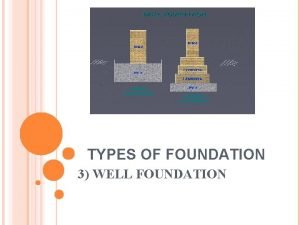1 ICT Foundation Copyright and License Copyright Copyright













- Slides: 13

1 ICT Foundation Copyright and License Copyright © Copyright 2010, IT Gatekeeper Project –Project Ohiwa Lab. All rights reserved. © 2010, IT Gatekeeper – Ohiwa Lab. All rights reserved.

2 What is copyrights? • Copyrights: rights for creators about cultural creations ▪ e. g. books, songs, pictures • Copyrights are given to creators automatically when works are created ▪ Copyrights exist even if the works are distributed freely • Validity period: 70 years after the creator died Copyright © 2010, IT Gatekeeper Project – Ohiwa Lab. All rights reserved.

3 Grant by Copyright Owner • If you want to use copyrighted works, you need a grant by the copyright owner. ▪ You need a new grant even if the work is published freely, if you want to use it for another purpose. ▪ Terms and conditions are determined by the copyright owner. • Some materials have statements such as "You can use this freely if you satisfy the following condition. " Copyright © 2010, IT Gatekeeper Project – Ohiwa Lab. All rights reserved.

4 Exceptions of copyrights Cases in which you need no grants. • Copy for personal use ▪ The copy must be used by the granted user. • Copy in libraries ▪ copy a part of works in libraries. ▪ only for appropriate reason (e. g. references used in your research) Copyright © 2010, IT Gatekeeper Project – Ohiwa Lab. All rights reserved.

5 Exceptions of copyrights • Copy as quotations ▪ quote a part of other works in your own work ▪ Your own work and the quoted part must be distinguishable. ▪ Your own work must be the main part compared to the quoted part. ▪ The source of the quoted work must be explicitly specified. Copyright © 2010, IT Gatekeeper Project – Ohiwa Lab. All rights reserved.

6 Exceptions of copyrights • Use in schools • distribute printed materials in classrooms. • public transmission for remote lectures. • Use as computer data • use for the purpose that is not enjoyment of works • minor use accompanied with services that create new information or knowledge. Copyright © 2010, IT Gatekeeper Project – Ohiwa Lab. All rights reserved.

【Practice】 Law about copyrights 7 • Following actions violate copyrights? 1. You found nice photos in a certain website so you downloaded and posted them to your Instagram. 2. You like a certain song very much so you wrote all of its lyrics at your blog site. 3. You found comprehensive explanation when you were writing a report so you copied and pasted that explanation to your report as a whole and handed out 4. You drew a portrait picture of a character of certain anime and showed at a website 5. You bought a very nice song in a music download site and gave a copy of the file to your friend. Copyright © 2010, IT Gatekeeper Project – Ohiwa Lab. All rights reserved.

【Explanation】 Law about copyrights 8 • All of them violate copyrights! 1. Photographs are copyrighted works. 2. Lyrics (without melody) are copyrighted works. 3. If you want to quote something, you need to satisfy the conditions of quotation. 4. Even if YOU draw the “portrait”, it violates copyrights of original character design. 5. It is outside the scope of personal use. Copyright © 2010, IT Gatekeeper Project – Ohiwa Lab. All rights reserved.

9 Licenses • Since computer software is a copyrighted work, you need to have a grant (or a license) to use it. ▪ For free software, license usually means a document that states terms and conditions by which use of the software is permitted. Licenses terms of Microsoft Office 2007 Copyright © 2010, IT Gatekeeper Project – Ohiwa Lab. All rights reserved.

10 Licenses for organizations • Licenses for corporations or universities where there are many computers. ▪ volume license: discount for bulk buying ▪ floating license: licenses are managed by a server so that only a certain number of computers can use the software at the same time ▪ site license : you can use the software on any computer in the organization Copyright © 2010, IT Gatekeeper Project – Ohiwa Lab. All rights reserved.

11 Site licenses in SFC • SFC signs up some site license software and students can use some (not all) of them ▪ “software”→ “site license software” in menu at http: //www. sfc. itc. keio. ac. jp/ • Software signed up by Keio University ▪ “service”→“software licensing center” in menu at http: //keio. jp Copyright © 2010, IT Gatekeeper Project – Ohiwa Lab. All rights reserved.

12 Open source license • Open source software (OSS): software whose source code is released to public and anyone can use it provided terms and conditions are satisfied. ▪ Open source license determines the terms and conditions. ▪ For example, “GNU public license (GPL)” and “BSD license” Copyright © 2010, IT Gatekeeper Project – Ohiwa Lab. All rights reserved.

13 Creative Commons • Open license which is suitable for any kind of copyrighted works. • Copyright owners can select terms and conditions among several patterns. ▪ http: //creativecommons. org/choose/ Copyright © 2010, IT Gatekeeper Project – Ohiwa Lab. All rights reserved.
 Shallow pad foundation
Shallow pad foundation Composition of urine slideshare
Composition of urine slideshare Copyright designs and patents act 1988 examples
Copyright designs and patents act 1988 examples License and theft bureau
License and theft bureau Limited lawn and ornamental license florida
Limited lawn and ornamental license florida Article 20-c food processing license
Article 20-c food processing license Legal and ethical issues in use of ict
Legal and ethical issues in use of ict Competitive hardware industrial park
Competitive hardware industrial park How you use ict today and how you will use it tomorrow
How you use ict today and how you will use it tomorrow Health and safety in ict
Health and safety in ict What is health and safety in ict
What is health and safety in ict Online platforms tools and applications
Online platforms tools and applications Ict scope and sequence pyp
Ict scope and sequence pyp Storage devices and media igcse ict
Storage devices and media igcse ict


